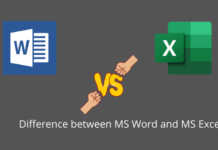As businesses grow and tasks multiply, it’s easy to become overwhelmed by the amount of work that needs to be done. In project management, overseeing multiple projects simultaneously can be daunting, and it can often lead to significant stress if not handled correctly. However, with the right approach, managing multiple projects successfully while avoiding pressure is possible. In this blog post, we’ll discuss six strategies to help you keep cool, stay organized, and stay on top of your workload when managing multiple projects.
1. Centralize your projects
Managing several projects inevitably starts with centralization within the same project management tool or software. Excel is now quickly outdated, given the number and complexity of projects in a company.
Encouraging teamwork is crucial as the teams are varied and may represent several departments. With centralization, you can avoid becoming overloaded and failing.
2. Define the objectives well
Your objectives are included in the initial stage of a project; it is critical to establish them while creating the specifications. The result of the reflection must be a set of realistic goals that can be measured at the project level. As a result, you will get through cartography.
In the realm of digital security, objectives include safeguarding personal information, preventing cyber attacks, and ensuring compliance with regulatory requirements. To achieve these objectives, it is essential to have a thorough understanding of the potential risks and threats in the digital landscape and the tools and strategies that can be employed to mitigate these risks.
3. Prioritize tasks
Consider the goals that will have the most influence on the strategic management of the business and the dangers that will follow when defining your priorities. For example, if the overriding objective is focused on growing turnover, focus on the project and the tasks that allow it to be achieved quickly.
When it comes to managing tasks, prioritization is critical. Having a long to-do list and needing to know where to start can be overwhelming. That’s where good graphs come in. They can help you visually prioritize tasks and tackle the most important ones first.
By prioritizing activities, you can also control how they are distributed. For example, if you see that one of your employees is overworked, you may shift their focus to the tasks that have been marked as priority.
4. Adjust calendars
One of the largest sources of stress for your staff is unrealistic deadlines. Concerns that have grown can result in serious situations like burnout and work stoppages. Retroactive planning done properly reduces this danger.
Moreover, scheduling deadlines improperly, with many deadlines falling on the same days or being put too close together, is a common bad practice when managing multiple projects.
Working with a time management coach is an effective way to address this issue and learn how to adjust calendars to optimize productivity. A time management coach is a professional who specializes in helping individuals manage their time more effectively, identify their priorities, and develop strategies for achieving their goals. These coaches provide personalized support, guidance, and feedback, helping individuals improve their organizational skills, create better habits, and succeed tremendously.
5. Avoid micromanagement
For the teams, this management style may need to be revised. It causes the workers’ jobs to be intensely and overly controlled, interpreted as lacking confidence.
Delegation and trust are the keys to getting out of this system. Employees will be more involved and calm if you give them some freedom. They can set their job priorities with the aid of an efficient tool.
6. Use the right tools
A management tool will quickly become necessary to implement these suggestions and techniques. Different tools and portals were developed to help teams manage projects more effectively and productively using contact management software to make life easier.
One of the most effective tools for multi-project management is a learning portal. A learning portal is a web-based platform that facilitates employee learning and development. It provides a centralized platform where you can manage multiple projects simultaneously, track progress, and collaborate with your team members.Also you can check the best learning platforms for gaining more knowledge.
The creation of a centralized project portfolio will also be possible. You may quickly put it up using ready-to-use templates.






















